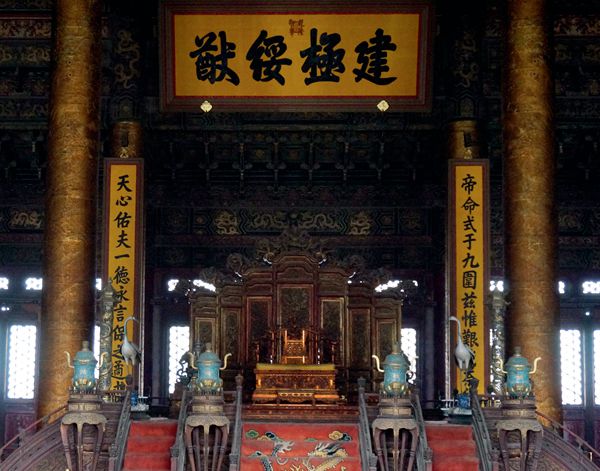Love of Chinese Language Expressed in Couplets
China Today, December 23, 2016 Adjust font size:
Roles
Couplets perform different functions on diverse occasions. Some express good wishes for the New Year, others congratulate newly-weds, wish seniors well on their birthdays, or mourn the passing and celebrate the life of deceased ones at funerals. Couplets also extol the beauty of scenic spots, promote the advantages and special features of a particular trade, and act as a medium for exchanging thoughts with or poking fun at friends or like-minded acquaintances.
The couplet evolved from poetry, and therefore shares many of its rules. For instance the last character of the first line (pasted on the right-hand side) has an oblique tone, while that of the second line (on the left) is more even, with a far stricter meter and rhyme scheme. And corresponding characters in the two columns must be the same part of speech, conveying an associable but not identical meaning, and also seamlessly fit into their context.
Compared with conventions on the length of poem, the couplet is more flexible. It may vary from one or two words to each line to several hundred.Like ancient Chinese writing, it has no punctuation. The couplet is often accompanied by a horizontal verse (hengpi) that summarizes or highlights the central points of the two vertical columns.
An ideal vehicle for self-expression, lyricism, and communication, the couplet appeared widely in ancient buildings – from imperial palaces to private gardens and studies. Executed in the finest calligraphy, it was an esteemed ornamentation, engraved on wood, stone, and bamboo strips as well as inscribed on paper. Writing couplets is the traditional reserve of the dry-witted master wordsmith.
Presence in the Forbidden City
The Forbidden City in central Beijing was home to 24 emperors of the Ming (1368-1644) and Qing (1644-1911) dynasties and their families. The world’s largest extant wood-structure palace complex, it includes dozens of sub-compounds subdivided into the Outer Court, where the monarch held court and presided over state ceremonies, and the Inner Court, the living quarters of the ruler and his entourage.

Couplets in the Taihe Hall in the Forbidden City written by Qing Emperor Qianlong.
Couplets are ubiquitous on these majestic buildings with elaborately carved beams and gorgeously painted pillars. Some were the personal calligraphy of emperors, but most were the works of court officials. Three hundred and nineteen pairs survive to this day.
Of all buildings in the Forbidden City, the Taihe (Supreme Harmony) Hall is the largest and of greatest significance. As site of the imperial throne it constituted the ceremonial seat of imperial power. The couplets in this hall were written by Qing Emperor Qianlong (1711-1799). They read: “By heavenly ordinance the emperor rules the nation, a challenging mission that he must perform with awe; In godly blessing is the rule of virtue, the high road to lasting peace which the emperor must forever adhere to.”
The Qianqing (Heavenly Purity) Hall was where Qing emperors handled daily state affairs. The couplets in this building were written by Emperor Kangxi (1654-1722). They read: “Role model for all his subjects, the emperor must be circumspect and far-sighted, and diligently cultivate his moral character; Following the teachings of ancient sages, the emperor should not ignore the reality of people’s livelihood, and be aware of their difficulties.”
Most of the couplets in the Forbidden City are in the form of inscribed plaques hung on columns (either at the entrance of a building or inside it) and walls. But some are innovative exceptions. For instance the pair on the opera stage in Shufang Zhai Palace is engraved on the shell of a qin (a seven-string plucked musical instrument). And those outside the Yangxin (Mental Cultivation) Hall are inlaid with jade.